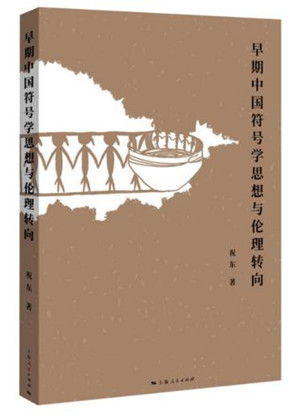
. > WHAT'S NEW > BOOKS
Evolution of early Chinese semiotic thoughts
Author : ZHANG JINSONG Source : Chinese Social Sciences Today 2023-07-27

Semiotic Thinking and Ethical Turn in Early China
Semiotic Thinking and Ethical Turn in Early China, by Zhu Dong, a professor from the School of Journalism and Communication at Jinan University in Guangdong Province, attempts to unravel the mysteries of the ancient Chinese symbolic world and achieve the sinicization of semiotics. The “ethical turn” in the title clearly indicates its efforts to integrate modern semiotic theory with ancient Chinese symbol thoughts.
Although China lacks an inherent semiotic theory and discourse, it indeed has a long history of symbolic thought, with a coherent framework built through agglomerating ideas scattered throughout various classical texts and contemporary scholarly discussions. An abundance of handed-down and unearthed literature refutes any notion that it is merely a product of the author’s unfounded imagination. Substantial oral and living materials from folkloristics and anthropology, as well as image objects from archaeological excavations also support an in-depth semiotic investigation.
Collecting and compiling traditional Chinese semiotic thoughts represents Zhu’s first step, made in Semiotic Thinking in Pre-Qin Philosophy published in 2014. While the former book focuses more on “what,” the latter tries to explain “why.”
When discussing the evolutionary development of bide [associating the property of natural objects with human virtues], the author argues that the culture of wu [witches and wizards] and zhu [priests] deifies natural objects, which were believed to convey the spirits of gods as symbols. The ritual and music cultural system in the Western Zhou Dynasty (c. 11th century–771 BCE) was meant to moralize natural objects and bear Confucian ethics. Not satisfied with merely gathering semiotic thoughts, Zhu attempts to unravel the enigma of origins.
The author gives a lucid explanation on those obscure points for general readers, such as the mysterious Yijing (Book of Changes) and the five elements. He points out the two sets of symbolic systems in Yijing, which are the verbal image system comprised of guaci [a short interpretative poetic passage of each hexagram] and yaoci [explanations for each individual line within a hexagram], and the pictorial image system of hexagram symbols and its manifestations. The work experienced a development process from hua [hexagram lines and patterns], xiang [images or meanings associated with each hexagram], to ci [textual explanations], the three of which correspond to representamen, object, and interpretant respectively. The most crucial link is to complete the process of “building xiang” upon objects. Conveying meanings with xiang fully showcases the semiotic view of Chinese ancestors who attached importance to visual cognition.
Zhang Jinsong is an associate professor from the Yangming College at Guizhou University.
Ye Shengtao made Chinese fairy tales from a wilderness
Ye Shengtao (1894–1988) created the first collection of fairy tales in the history of Chinese children’s literature...
-
How northern ethnicities integrated into Chinese nation
2023-09-18
-
Mogao caves
2023-09-12
-
Mogao Grottoes as ‘a place of pilgrimage’
2023-09-12
-
Time-honored architectural traditions in China
2023-08-29
-
Disentangling the civilizational evolution of China
2023-08-28
-
AI ethics in science fiction
2023-08-23













 2011-2013 by www.cssn.cn. All Rights Reserved
2011-2013 by www.cssn.cn. All Rights Reserved